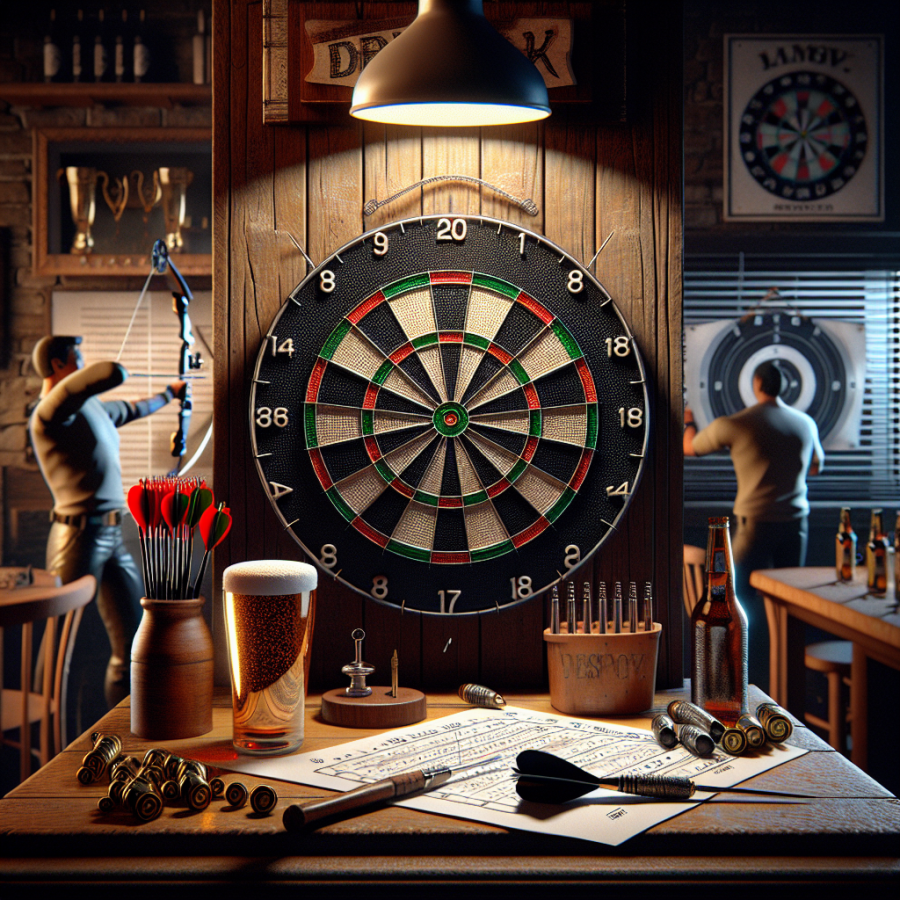From Archery to Axe Throwing: Diverse Paths in the World of Target Sports
In recent years, the interest in target sports has expanded far beyond the traditional realm of archery and marksman competitions. The adventurous and skillful pursuit of hitting a target has branched out, incorporating a variety of disciplines that test precision, focus, and control. This exploration journeys through lesser-known but equally enthralling target sports such as axe throwing, knife tossing, and slingshot accuracy — each presenting its own unique challenges and attraction.
Axe Throwing:
Once an ancient weapon and tool, the axe has found a new place in modern recreation. This sport involves competitors throwing axes at a wooden target, aiming to hit as close to the bullseye as possible. Originating from the logging traditions of North America, axe throwing has surged in popularity and now boasts leagues and venues dedicated to honing this skill. Participants receive scores based on where their axe lands on the target, with the bullseye commanding the highest points. What makes this sport so captivating is its raw primal feel and the satisfying thud of metal into wood when the throw is true.
Knife Tossing:
The art of knife throwing dates back to prehistoric times and has been featured in various historical and cultural contexts throughout the centuries. In the competitive arena, knife tossers aim to stick their blades into a target from a set distance. This sport requires intense concentration and a steady hand, as the thrower must consider the rotation and weight of the knife to ensure its point strikes the target accurately. The skill lies in consistent precision and the mastery of technique, making it both challenging and rewarding for enthusiasts.
Slingshot Accuracy:
The slingshot, often associated with childhood games, has evolved into a precise target sport, with equipment becoming increasingly sophisticated. Competitors use slingshots to propel ammunition, typically steel balls or clay pellets, towards targets that can range from cans and cardboard cutouts to competitive scoring rings. Slingshot accuracy is not only a test of steadiness and aim, but also of understanding the ballistic trajectory, as the shooter must account for factors like distance, wind, and the weight of the projectile. Mastery of the slingshot offers a unique satisfaction that comes from succeeding with such a simple yet difficult-to-master tool.
Dart Blasting:
Not to be confused with traditional darts, dart blasting involves firing foam projectiles from a variety of blasters toward targets. This activity has seen a surge in popularity thanks in part to the accessibility and innovation of dart blaster technology.
Read also:
Mastering the Art of Juggling: A Step-by-Step Guide
Mastering the Art of Precision: An Exploration of Target Shooting Disciplines
Target shooting is a sport that captivates enthusiasts worldwide with its challenging nature and the honing of skill it demands. From novices to Olympic athletes, precision shooting is an art form that requires undivided attention and unwavering concentration. In this exploration, we delve into the various disciplines that constitute the world of target shooting, each with its unique set of rules, equipment, and techniques.
**Smallbore Rifle Shooting**
Smallbore rifle shooting generally encompasses shooting at stationary targets with .22 caliber rifles. It is an Olympic sport with two main categories: 3-position shooting and prone events. The 3-position event tests shooters as they fire from standing, kneeling, and prone positions, each demanding a unique balance of stability, control, and strength. Mastery in this discipline is a testament to the shooter's versatility and their ability to adapt to different physical demands while maintaining precision.
**High Power Rifle Shooting**
Moving beyond the small calibers, high power rifle shooting involves larger calibers like the .308 Winchester or .223 Remington. This category includes the service rifle competitions, which emulate military shooting standards. Shooters face the challenge of hitting distant targets, often over 500 to 1,000 yards away. Not only is precision critical, but shooters must also have an acute understanding of ballistics, wind reading, and mirage interpretation.
**Precision Air Rifle and Pistol Shooting**
In air rifle and pistol disciplines, competitors use .177 caliber airguns, and contests are held indoors with targets placed at 10 meters. These events focus intensely on steadiness, shot execution, and consistency. Even the smallest mistake in technique or a lapse in focus can result in a missed bullseye. Precision air shooting is an Olympic sport and is widely practiced by athletes of all ages due to its accessibility and minimal safety requirements.
**Skeet and Trap Shooting**
In stark contrast to the contained, static world of bullseye target shooting, skeet and trap shooting throw moving targets, or clay pigeons, into the mix. This dynamic form of shooting tests not just marksmanship, but also timing, hand-eye coordination, and the shooter's ability to lead moving targets. Skeet shooting involves stations arranged in a semicircle with the clays being thrown from two fixed points, while trapshooting clays are launched unpredictably from a single house.
**Benchrest Shooting**
Benchrest shooters strive for the ultimate in accuracy and precision.




